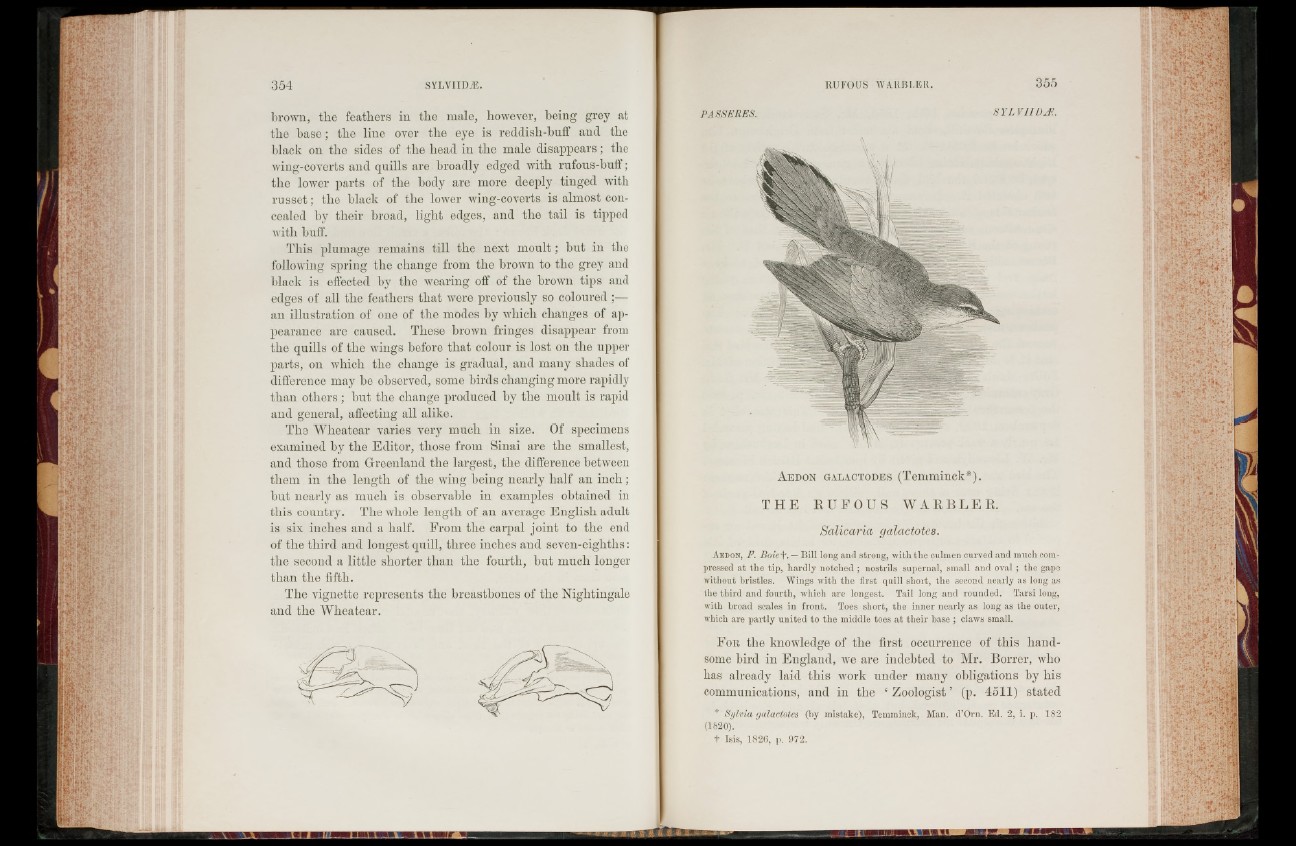
brown, the feathers in the male, however, heing grey at
the h ase; the line over the eye is reddisli-huff and the
black on the sides of the head in the male disappears; the
wing-coverts and quills are broadly edged with rufous-buff;
the lower parts of the body are more deeply tinged with
russet; the black of the lower wing-coverts is almost concealed
hy their broad, light edges, and the tail is tipped
with buff.
This plumage remains till the next m oult; hut in the
following spring the change from the brown to the grey and
black is effected by the wearing off of the brown tips and
edges of all the feathers that were previously so coloured;—
an illustration of one of the modes by which changes of appearance
are caused. These brown fringes disappear from
the quills of the wings before that colour is lost on the upper
parts, on which the change is gradual, and many shades of'
difference may he observed, some birds changing more rapidly
than others; but the change produced by the moult is rapid
and general, affecting all alike.
The Wheatear varies very much in size. Of specimens
examined by the Editor, those from Sinai are the smallest,
and those from Greenland the largest, the difference between
them in the length of the wing heing nearly half an inch ;
but nearly as much is observable in examples obtained in
this country. The whole length of an average English adult
is six inches and a half. From the carpal joint to the end
of the third and longest quill, three inches and seven-eighths:
the second a little shorter than the fourth, hut much longer
than the fifth.
The vignette represents the breastbones of the Nightingale
and the Wheatear.
A e d o n g a la c to d e s (Temminck*).
T H E R U F O U S W A R B L E R .
Salicaria galactotes.
A edon, F. Boief. — Bill long and strong, with the culmen curved and much compressed
at the tip, hardly notched ; nostrils supernal, small and oval ; the gape
without bristles. Wings with the first quill short, the second nearly as long as
the third and fourth, which are longest. Tail long and rounded. Tarsi long,
with broacl scales in front. Toes short, the inner nearly as long as the outer,
which are partly united to the middle toes at their base ; claws small.
F o r the knowledge o f the first occurrence of this handsome
bird in England, we are indebted to Mr. Borrer, who
has already laid this work under many obligations by his
communications, and in the ‘ Zoologist ’ (p. 4511) stated
* Sylvia galactotes (by mistake), Temminck, Man. d’Orn. Ed. 2, i. p. 182
(1820).